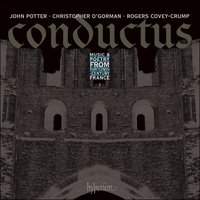Texte paru dans: / Appeared in: |
|
|
Outil de traduction (Très approximatif) |
|
|
Reviewer:
David Fallows
Now that all three discs are
available, though, it becomes easier to see that the set represents two basic
views that have their adherents but may lessen the enjoyment to be gained here.
First, that music of the 13th century is quite unlike later music in that it
doesn’t reflect the content of its texts: thus the song of open seduction in
Al entrant del tans salvage sounds not much different from the song of
unrequited love (with the same melody), Per dan que d’amor mi veigna, and
so on. The second concerns the notation of the melismatic (sine littera)
sections and the syllabic ones (cum littera). I need to get technical
here, but it seems important so that listeners understand why some of the music
is a touch boring. Again and again in the conductus repertory, the sine
littera sections are in regular ligatures that are easily read in the
‘rhythmic modes’ described by the theorists; by contrast, the cum littera
sections appear in the manuscripts in equal note-values. For years, it was
concluded logically enough that the metrical structure established in the
sine littera sections should be continued in the cum littera
sections. But as of about 30 years ago scholars began to doubt this. So the
present set jerks from the lilting rhythms of the sine littera sections
to an equisyllabic presentation of the texted sections. To my ear this almost
always makes no sense. That is not to say that the entire conductus repertory
must be interpreted in the same way. But it is to say that somehow the baby has
been thrown out with the bathwater. |
|
|
|
|
|
Cliquez l'un ou l'autre
bouton pour découvrir bien d'autres critiques de CD |
|




